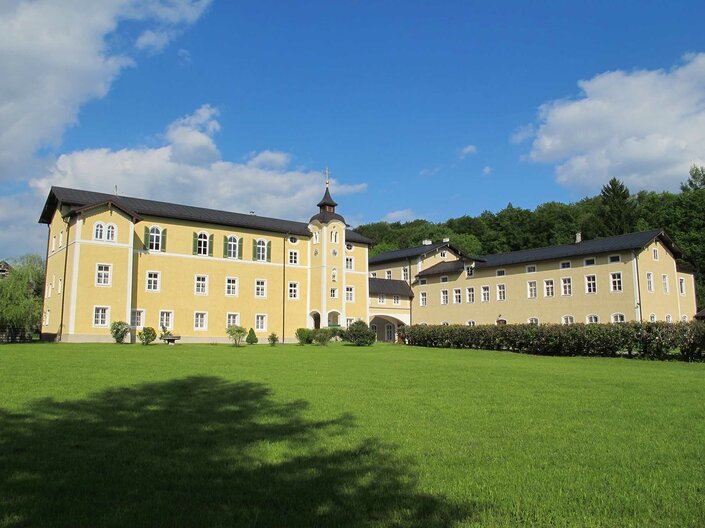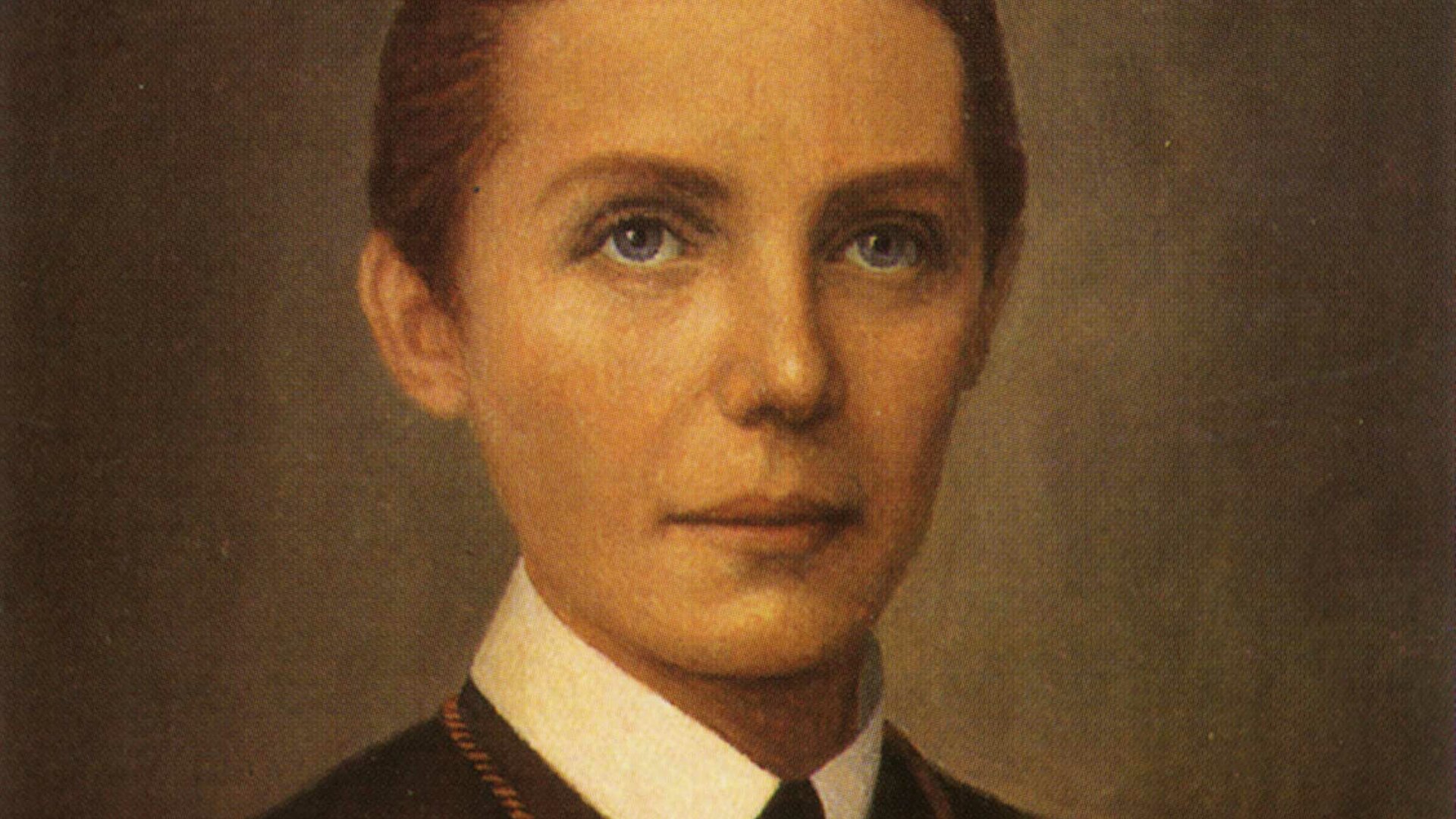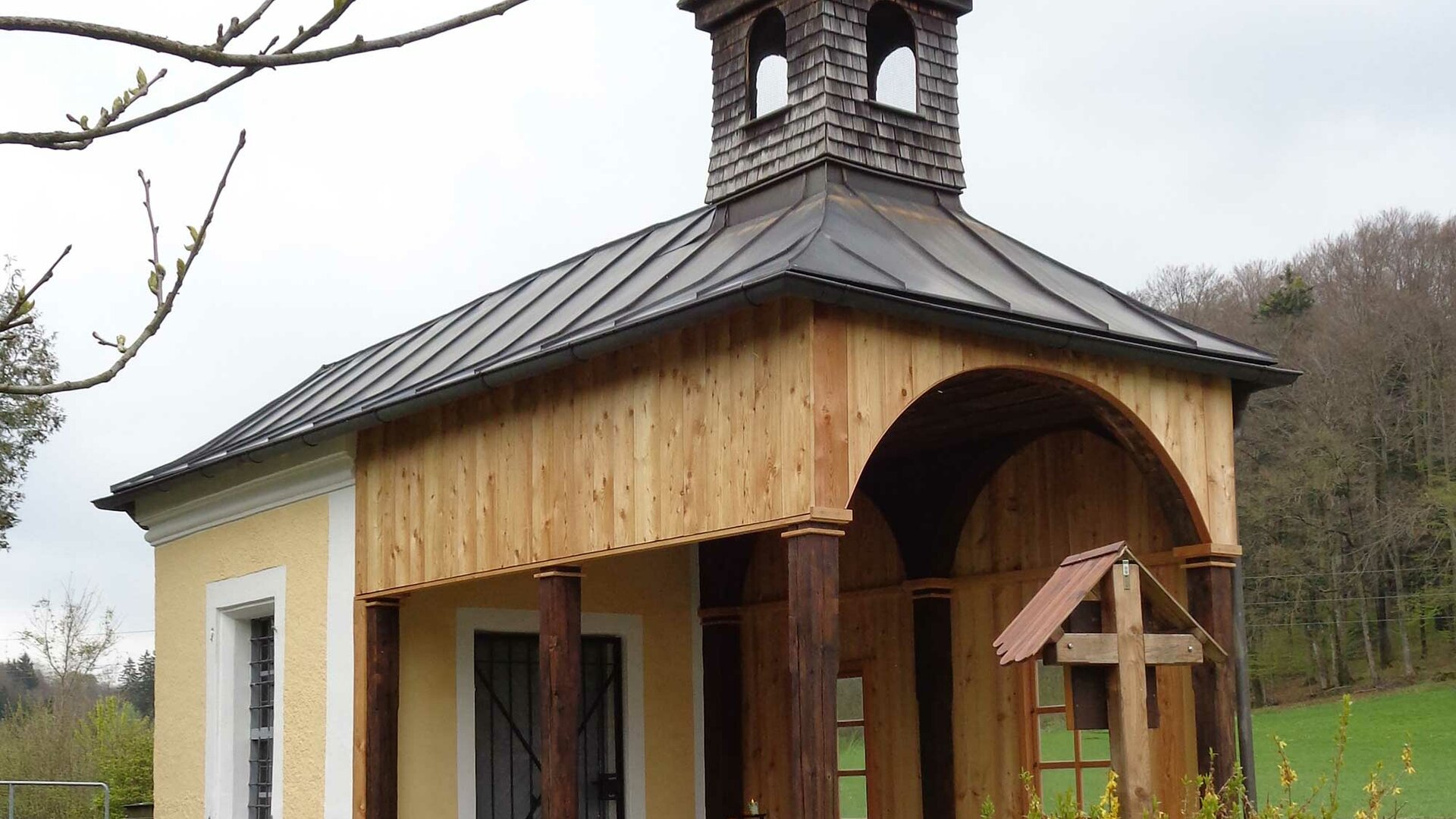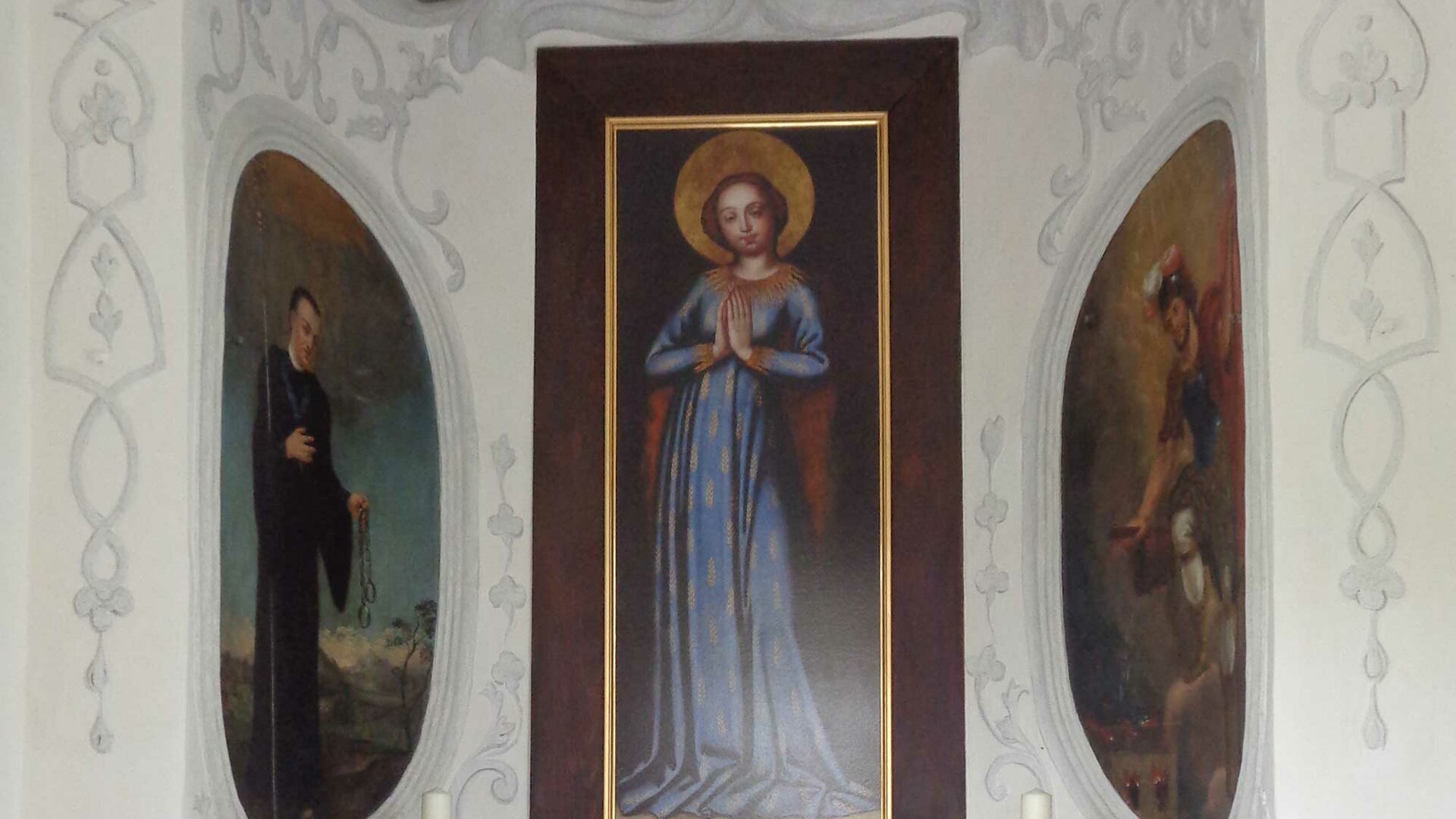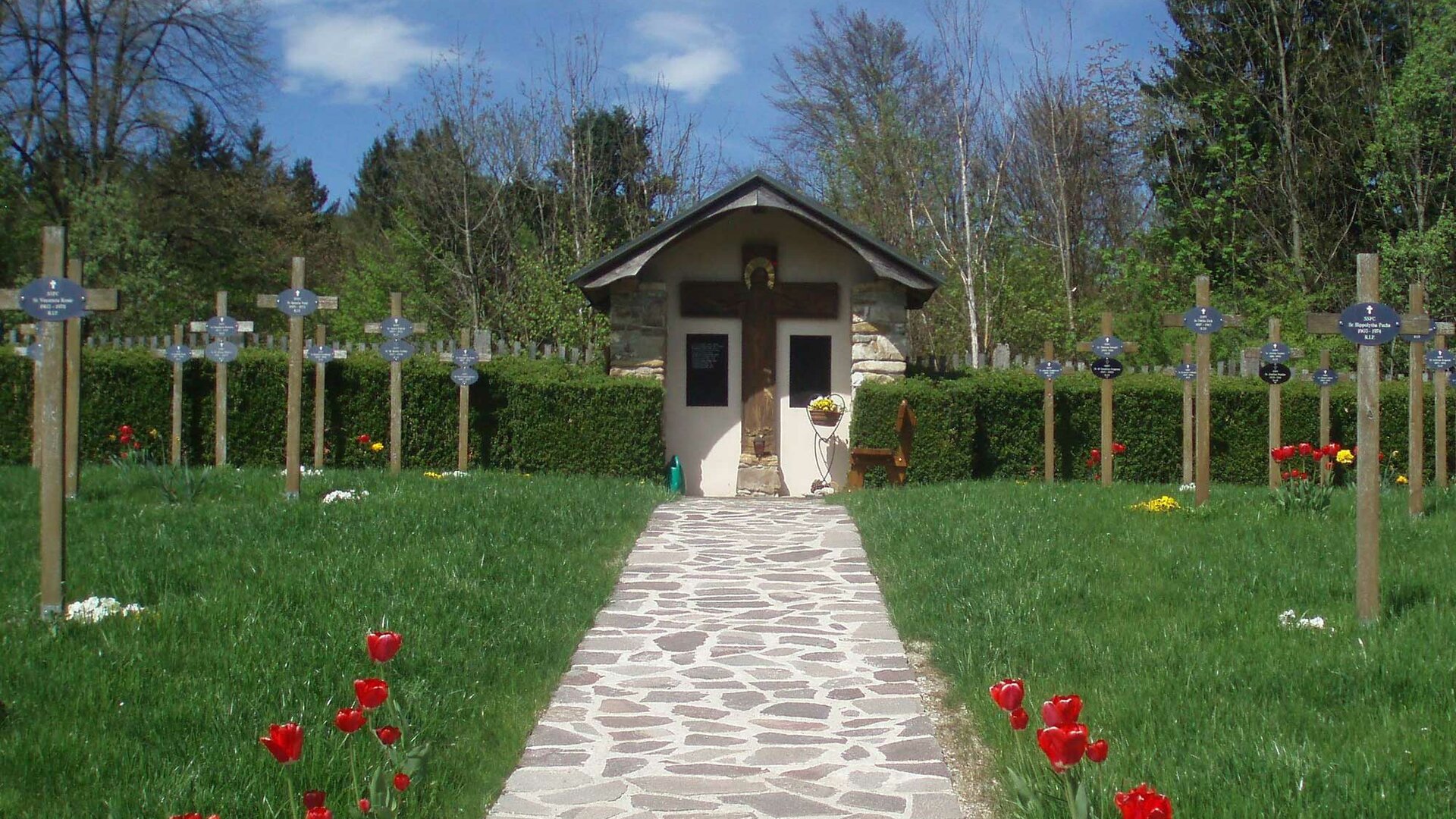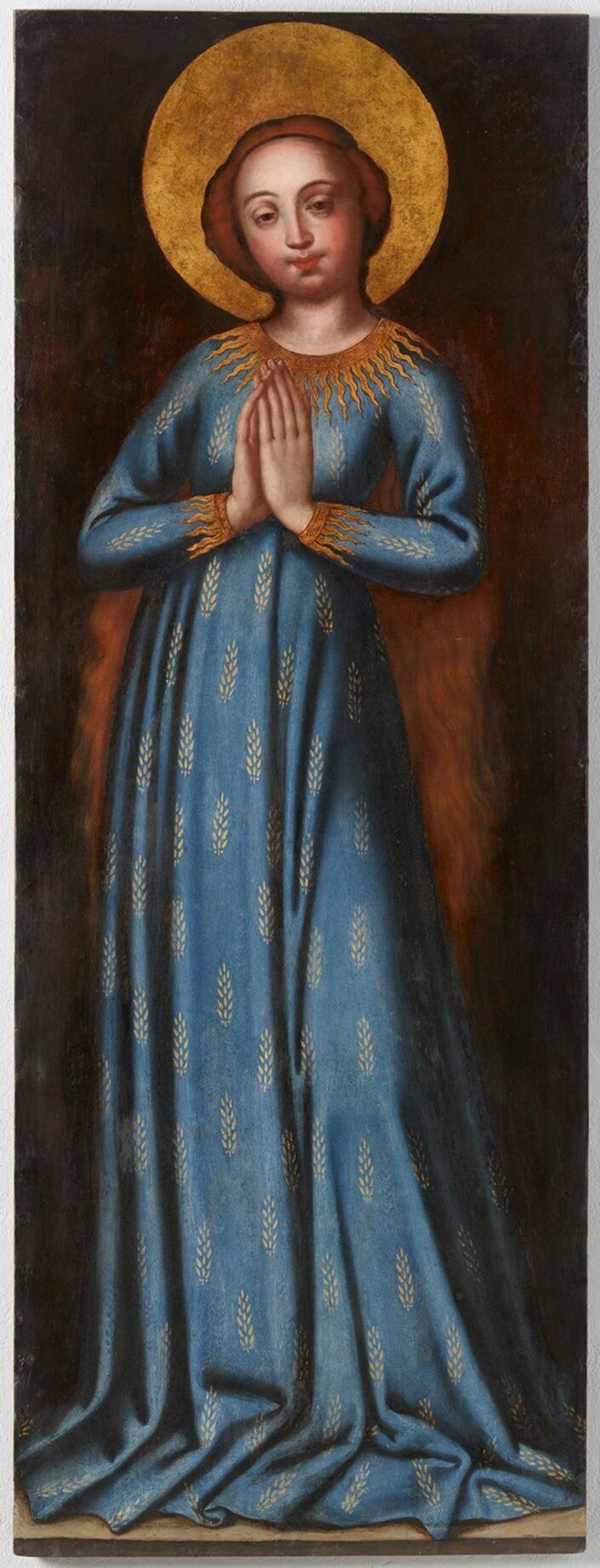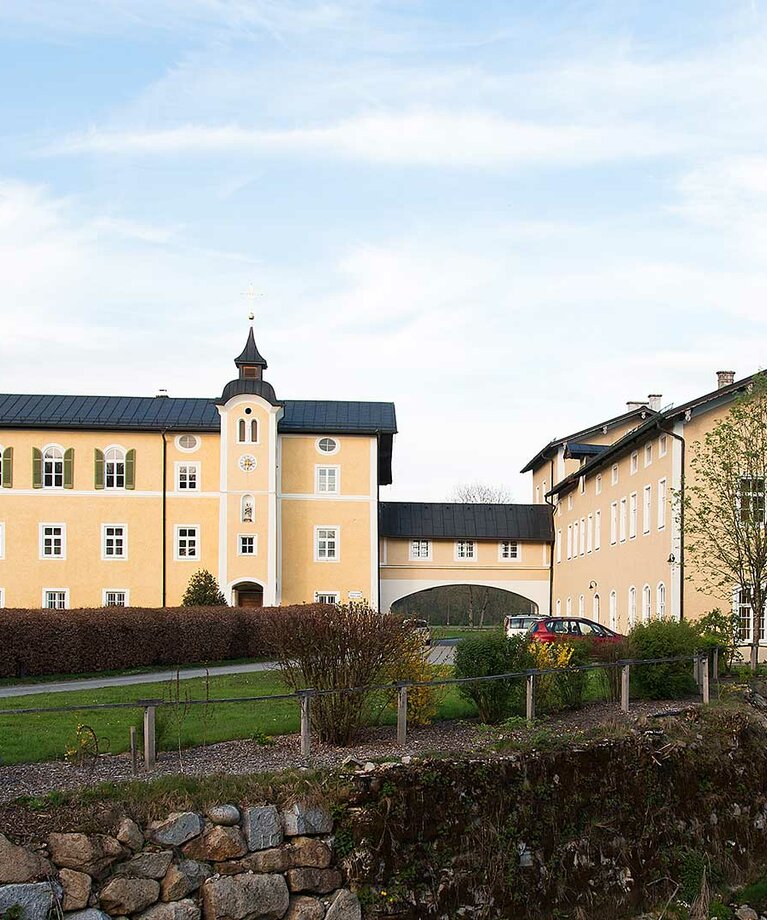
Maria Sorg
The Maria Sorg Mission in Lengfelden served as the base for much of the work that was done by Maria Theresia Ledóchowska. From the end of the 19th century, she attempted in many countries throughout Europe to awaken interest in African missionary activities.
She strove to provide assistance to all missionaries, regardless of their denomination or nationality.
Although she was never in Africa herself, she was lovingly known by the missionaries and Africans as "their mother".
To this day, nuns live and work at the Mission, still doing what they can to support missions in sore need of assistance.
"It is my life's task, and that of the society to which I belong, to expand more and more the interest in missionary work and, when possible, to plant the missionary seed in all hearts."
(the Blessed Maria Theresia Ledóchowska, Wien 1913)
The Chapel of St. Mary in the convent garden as well as the order's cemetery are open to the public:
daily from 9:00 a.m. - 5:00 p.m.
Historical Overview
- 1863 Maria Theresia Ledóchowska is born in Loosdorf/Lower Austria on 29 April, the eldest daughter of Count Anton Ledóchowski and Swiss countess Josephine Salis Zizers.
- 1885 Maria Theresia enters service in Salzburg as lady-in-waiting to Grand Duchess Alice of Tuscany. Here, for the first time she encounters the problems faced by missionaries. She writes articles and publishes letters from missionaries.
- 1891 She leaves court and works with laypeople for the mission.
- 1894 She founds the St. Petrus Claver Sodality in order to support African missions.
- 1897 From the Sacred Heart Mission in Liefering, she purchases a property in Lengfelden that was originally a paper mill and renames it Maria Sorg. The first mass is celebrated in the garden chapel with Dr. Ignaz Rieder. Despite fierce opposition by the printers’ association, she acquires the concession to operate a mission printing works. Soon the printers are running at full capacity.
- 1899 Authorization is granted to consecrate a cemetery for the sisters in the convent garden
- 1900 The first bibles, catechisms, prayer and hymn books in African languages are sent from “Maria Sorg” across the sea to Africa.
- 1914-1918 In spite of the First World War, the founder manages to continue her missionary work, sending oversees considerable donations from friends of the mission as well as printed materials.
- 1922 Maria Theresia Ledóchowska dies at the hospital of the Missionary Sisters of St. Petrus Claver in Rome.
- 1939-1945 Maria Sorg is seized and used by the Wehrmacht as a work camp for women.
- 1946-1953 A refugee camp is set up in the rooms of the former mission print shop
- from 1946 Gradual return of sisters to Maria Sorg and resumption of their activities to support missionary work through prayer, publications and financial aid
- 1975, 19 October, Mission Sunday - Maria Theresia Ledóchowska is beatified by Pope Paul VI
- Until now: The congregation of the Missionary Sisters of St. Petrus Claver is spread out around the world, with 237 sisters from 28 countries living in 44 communities on all continents.
"Madonna of the Wheat Ears" at Maria Sorg
The small Chapel of St. Mary in the garden of Maria Sorg was built in 1683, the year when the Turkish siege of Vienna was lifted, by the owner of the property at that time, Peter Zillner.
From about 1770, an altar painting was used that depicted the Virgin Mary in a long, blue dress adorned with ears of wheat. The rounded neckline and sleeves are hemmed by rays of sun. Brown hair frames her youthful face, while the halo is reminiscent of the rising sun.
Explanation of the paining's symbolism: Maria, who gave birth to Christ.
This is symbolically represented in the form of ears of wheat on her dress.

